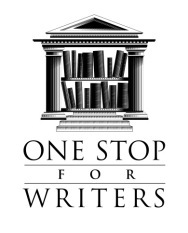How Your Hero’s Past Pain Will Determine His Character Flaws
Authentic characters are usually modeled after real people. I don’t mean pulling traits and quirks from those we know (say, taking Aunt Judy’s laughter and blending it with the overly-smiley bus driver who takes us to work on Tuesdays and Thursdays). Rather, I’m talking about mirroring the human experience in the fictional world, giving readers a character who has desires they can relate to, and who struggles, fails or succeeds all in turn.
 Human experience is also about the push for self-discovery, finding meaning, and achieving worthy goals. Just like real people do, our characters should seek to improve themselves in some way—at work, in personal relationships, spiritually, or through self-growth.
Human experience is also about the push for self-discovery, finding meaning, and achieving worthy goals. Just like real people do, our characters should seek to improve themselves in some way—at work, in personal relationships, spiritually, or through self-growth.
In fiction, the road to what one desires is never easy. Authors want to create a window into this internal life struggle that we all know so well. To do so, we write characters who have flaws–negative qualities that surface at the worst of times, sabotaging their efforts, blocking them from gaining what they want both on a conscious and subconscious level. It’s ironic, really; who they are and what they want are often at odds, making it difficult for them to achieve success.
As you can imagine, choosing the right flaws for a character is really important as they will directly affect character arc and how the story plays out for readers. So let’s look at why flaws become part of who someone is, and where they come from.
Digging Up Backstory: Negative Influencers & Experiences
In real life, who we are now is a direct result of our own past, and so in fiction, we need to look at who our story’s cast were before they stepped onto the doorstep of our novel. Many factors play a part in determining who our characters become, including the way they were raised, their role models, environment, and genetics. And if the character’s world is anything like ours, it’s filled with flawed people because life isn’t a perfect, well-balanced nirvana. And when it comes to the negative experiences or influences, each impart a lesson, and usually not a healthy one.
For example, specific events and long-term exposure to unhealthy ideas, behavioral patterns, and relationships can hamstring a character. An ignorant character, for instance, may be ignorant due to years of poor teaching, or from being sheltered in a way that limited his ability to connect or get along with others. This history of not being taught the whole truth creates a deficiency in his personality that undermines his ability to reach his full potential. An evasive character, on the other hand, may be this way as a result of seeing someone he cared about be taken advantage of by others because they spoke the truth, or they were overly trusting when they should have been on their guard.
 While these past situations are important, the most crippling factor—the one that authors should always strive to unearth from their characters’ pasts—is emotional trauma. Old hurts can have a huge impact on our characters, influencing their current behavior. Emotionally painful events like these are called wounds and are profoundly powerful. This defining emotional experience from a character’s past is so debilitating that he’ll do anything to avoid suffering the same kind of pain again. It colors how he views the world and alters what he believes about himself and others. This traumatic experience instills a deep fear that the same hurt will happen again if the character doesn’t protect himself against it.
While these past situations are important, the most crippling factor—the one that authors should always strive to unearth from their characters’ pasts—is emotional trauma. Old hurts can have a huge impact on our characters, influencing their current behavior. Emotionally painful events like these are called wounds and are profoundly powerful. This defining emotional experience from a character’s past is so debilitating that he’ll do anything to avoid suffering the same kind of pain again. It colors how he views the world and alters what he believes about himself and others. This traumatic experience instills a deep fear that the same hurt will happen again if the character doesn’t protect himself against it.
Physical defects with a lasting psychological effect, such as a crippling illness or disfigurement, can have the same result. In both cases, the mistaken belief that the character must harden himself in order to be emotionally safe is what allows negative traits to emerge.
The Character’s Wound
Wounds are often kept secret from others because embedded within them is the lie—an untruth that the character believes about himself (or a skewed belief about the world). He may think that he deserved what happened to him, that he’s unworthy of love or affection or happiness, etc. Self-blame and feelings of shame are usually deeply embedded within the lie and it generates fears that compel him to change his behavior in order to keep from being hurt again.
For example, if a man believes he is unworthy of love (the lie) because he was unable to stop his fiancee from being shot during a robbery (the wound), he may adopt attitudes, habits, and negative traits that make him undesirable to other women. If he does grow close to someone, he might sabotage the relationship before it can become too serious. He may also avoid situations in which he is responsible for others, believing that he will only fail them in the end.
To use a less dramatic scenario, consider a daughter growing up with a father whose work was more important than his family (the wound). This girl may become a workaholic adult due to her belief that the only way to gain the attention and acceptance of others is through career achievement (the lie). Although she wants a family of her own, she may sacrifice that desire so she can dedicate herself to work. Her health declines, friends become marginalized, and her life revolves only around activities that promote her career, leaving her successful at work but unfulfilled in her heart.
The lie plaguing your character should center on one of five basic human needs:
1) To secure one’s biological and physiological needs
RELATED LIE: I’m not capable of providing for myself or anyone else
2) To keep oneself and one’s family safe
RELATED LIE: I don’t deserve to feel safe
3) To feel connected to and loved by others
RELATED LIE: I am not worthy of love or affection
4) To gain esteem, both from others and from oneself
RELATED LIE: I can’t do anything right
5) To realize one’s full potential
RELATED LIE: I’ll never be a good ____ (parent, employee, friend, etc.)
Many secondary flaws result organically from one’s upbringing or environment rather than birthing violently from a traumatic wound, but a character’s major flaw should always be traced back to a defining hurtful experience. This flaw will compromise his path to achieving his dreams and prevent him from reaching his full potential. It is this weakness that the character will eventually have to overcome by revisiting the past and coming to terms with his old wound.
Wounds are powerful, both in real life and in fiction. Taking the time to probe you’re character’s past to find their emotional pain will help you better understand what motivates them and how they will behave when crises arise and choices must be made. One tool to help with understanding a character’s past, motivation, emotional sensitivities and more is the Reverse Backstory Tool. Full guidelines are in the Negative Trait Thesaurus, and a downloadable chart can be found HERE. Also, the Emotional Wound Thesaurus is a treasure trove of ideas for wounds, and serve as great examples for how much a wound will alter you’re character’s behavior.
Does your hero have a wound? What fear does it mask? What lie does the character believe about himself as a result? Let me know in the comments!
 Before you go…
Before you go…Today is the last day to get your hands on free One Stop For Writers passes. Imagine having One Stop at your side during NaNoWrimo…you would be unstoppable, a demon with a keyboard!
So why not try to win 10 passes for your NaNoWriMo Group, and be the Superhero of November? 100 passes are up for grabs and all the details are right here…good luck!
Image 1: jill 111 @ Pixabay
Image 2: wocandapix @ Pixabay
The post How Your Hero’s Past Pain Will Determine His Character Flaws appeared first on WRITERS HELPING WRITERS™.
Writers Helping Writers
- Angela Ackerman's profile
- 1015 followers



